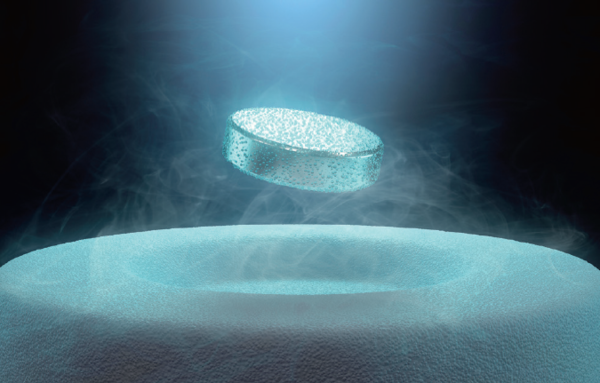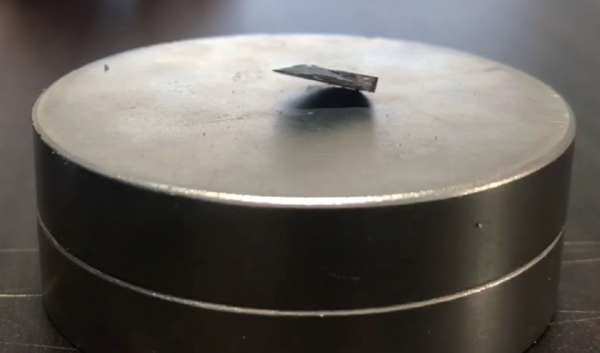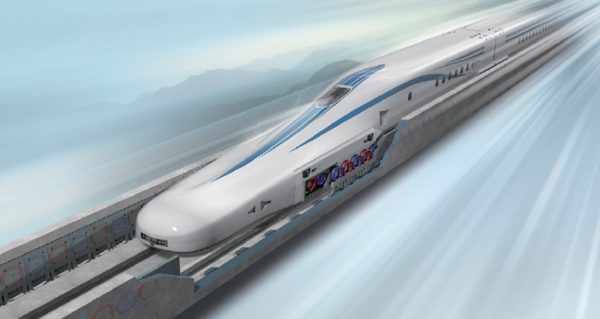Unobtainium, the highly valuable rare-earth compound in the movie Avatar, or superconductor in a scientific context, was claimed to be created by South Korean researchers on July 22nd. Although the intitial glimmers of hope now seem to be slowly fading away, the sensational pre-print paper made remarkable waves across the world, bringing attention to the creation of a magical substance that has been sought after for over 100 years. Explore the mysteries of superconductors, the keys to a whole new world, with the Sungkyun Times (SKT).
Real-Life Unobtainium
-Superconducting Superconductors
Superconductors are materials that can conduct electric currents indefinitely. Specifically, they refer to materials that demonstrate the Meissner effect and have zero electrical resistance. The Meissner effect refers to the expulsion of the magnetic field in the interior of a superconductor during its transition to a state that allows magnetic levitation. The Meissner effect, along with zero electrical resistance, are the two most important factors that distinguish superconductors from other materials. Studies regarding superconductivity started in 1911, when Heike Kamerlingh Onnes first observed the resistance of mercury disappearing at an absolute temperature of 4.2K. However, in 1987, the discovery of high-temperature superconductivity by Bednorz and Müller started the boom of research on superconductors. Considering the fact that five Nobel Prizes have been awarded in the field of superconductors, it is clear that they are vital materials for the future. In fact, superconductors are the dream material that can demonstrate a 100% efficient electrical grid, quantum computer, magnetic levitation train, magnetic resonance imaging (MRI), and more. Unfortunately, the current superconductors only operate under ultra-cold temperatures, which restricts their use.
-The First in Korea
On July 22nd, a group of South Korean researchers from the Quantum Energy Research Centre (QERC) published a preprint paper titled The First Room-Temperature Ambient-Pressure Superconductor on arXiv, a non-peer-reviewed repository for scientific reports. QERC is a small venture company established in 2008 by students of the late Professor Choi Dong-sik from the Department of Chemistry at Korea University (KU). This remarkable study immediately garnered the world’s attention, leading to the presentation of the thesis after the closing of the Metallic Multilayers (MML) symposium at KU on July 28th in response to numerous requests. Since the release of the recipe of the proclaimed superconductor, LK-99, research on this matter has commenced globally. Despite popular belief, Korea is not the first to claim the invention of a room-temperature superconductor. In 2020, a research team led by Professor Ranga P. Dias of the University of Rochester in the United States (U.S.) published a thesis claiming the discovery of superconductivity at 15°C in the world’s leading scientific journal, Nature. However, it was later withdrawn after the team was accused of manipulating scientific data. After the incident, the science community remained cautious about the announcements regarding the invention of the ambient temperature superconductor. Domestic superconductor academia also kept a skeptical view since there had been no previous exchange with the research center.

LK-99 in a Nutshell
LK-99 is named after QERC’s CEO Lee Suk-bae, the research director Kim Ji-hoon, and its year of discovery, 1999. The QERC claims that the superconducting material is made of easily accessible elements such as lead, copper, and phosphorus. Its manufacturing process is also relatively simple, taking a total of 53 to 68 hours. The simplified steps begin with a substance obtained by baking copper phosphate for 10 hours. The substance is mixed with lead oxide and lead sulfate and is reacted for 24 hours, creating a material in the form of apatite. In mineralogy, apatite refers to a hexagonal system, which means that the arrangement of atoms is repeated in the shape of a hexagonal column. Due to the partial conversion of lead atoms to copper atoms during manufacturing, this lead apatite forms an asymmetrical shape. During this process, the volume of lead apatite decreases by 0.48%, creating a slightly distorted shape. According to the QERC, this distorted shape is the most essential factor for maintaining the superconductivity in LK-99. Researchers explained that its reduced volume decreases the distance between the atoms, which generates electrical currents between copper atoms and performs superconductivity. Alongside the explanation, the researchers proclaimed that superconductivity was observed above 30°C, and the critical temperature based on magnetic field and heat capacity was measured at 127°C. In other words, superconductivity was marked under 127°C, indicating that LK-99 is the superconductor with the highest critical temperature in history. Moreover, on August 15th, the research team explained the theoretical background of the superconductivity of LK-99, alluding to the One-Dimensional BR-BCR theory. This theory implies that LK-99 is the first one-dimensional superconductor ever invented and that electricity flows without resistance between the vertically bonded copper atoms in the hexagonal column.
Superconductor, LK-99?
-"Maybe"
With the massive surge of interest from the research community in LK-99 and the material claimed to be an ambient temperature superconductor, researchers began aiming to reproduce this material. On August 1st, researchers at Lawrence Berkeley National Laboratory in the U.S. stated that forming superconductivity in copper-doped apatite may be possible. Researchers from the Shenyang National Laboratory for Materials Science in China and Northwestern University in the U.S. also argued the potential of LK-99 as a superconductor by applying the Density-functional theory (DFT) and their X-ray structure data. Nevertheless, in solid-state physics, experimental reproduction means more than theoretical calculations. However, the research was quickly followed up by cases reporting the success of partial reproduction of LK-99. On August 2nd, scientists at Southeast University in Nanjing, China, reported that they had successfully synthesized LK-99 and measured zero resistance, but only at a low temperature. The American space research company Varda Space also released a video of their reproduced version of LK-99. However, this version showed unstable movement, as it lacked flux pinning, which is the fixation of magnetic field lines that prevent superconductors from moving. In short, none of the research was able to reproduce LK-99 yet. QERC responded that the confusion may be caused by a lack of technology, implying that using the same recipe does not always guarantee the same results. Park Jin-ho, the Vice President of the Korea Institute of Energy Technology (KENTECH) and a joint researcher, explained in an interview with Dong-A Ilbo in August that LK-99 is a ceramic compound, and its manufacturing process is similar to pottery baking. Reasoning that the company has its way of synthesizing LK-99, which is hard to describe on paper, he suggested that the most accurate way to test the superconductivity of LK-99 is by testing the samples of LK-99 provided by the research center.
-"Unlikely"
Skepticism concerning LK-99 only continues to grow. The two most important factors in determining superconductivity — zero resistance and the Meissner effect — are hard to tell from the poor data provided by the research center, and it falls short of being convincing, according to The Korean Society of Superconductivity and Cryogenics (KSSC). Some also criticize that it is hard to conclude the superconductivity of LK-99 even under the circumstances of the videos and photos that have been released. The video of the QERC in March demonstrated some vibration and movement of LK-99 when a magnet was brought near. The KSSC was also skeptical regarding the practicality of LK-99, claiming, “Although the paper asserts that the partial levitation is due to an imperfect sample, there is a chance of ferromagnetism, and therefore may not be the Meissner effect.” Additionally, on August 4th, Nature reported that the “claimed superconductor LK-99 is an online sensation, but replication efforts fail to prove it.” The Condensed Matter Theory Center of the University of Maryland, U.S., concluded that “the game is over, and LK-99 is not a superconductor.” Professor Choi Han-yong from the Department of Physics at Sungkyunkwan University, currently participating in the LK-99 Verification Committee consisting of 30 professors from the KSSC, told the SKT, “More data was needed to claim the superconductivity of LK-99,” and that “it can be seen as a hasty announcement.”

In the Dream World
-Room for Improvement
The LK-99 report was undoubtedly a sensation. However, the chances of LK-99 being a superconductor seem to be low. Nonetheless, with its theoretical potential as a superconductor acknowledged, LK-99 definitely brought global interest to South Korea’s superconductor industry. On the other hand, several key flaws were observed throughout the process. The most commonly mentioned limitation was the quality of the paper. Many criticized the lack of data, which also made it challenging to reproduce LK-99 in the verifying process. In fact, the biggest success of LK-99 is the spreading awareness of superconductors among the public, according to Professor Choi. The publishment method was another factor that dropped the study from the gold standard. The QERC chose arXiv, a non-peer-reviewed repository, for a quicker release. Although this may not be a fatal flaw, it is clear that it draws back from becoming a high-quality paper. Having been criticized as an amateurish paper, it seems crucial to publish papers in a better state — peer-reviewed and evaluated by academia.
-Perhaps in the near Future
Currently, it is ambiguous where humanity is at in terms of superconductor development. However, it seems evident that almost everything in daily life will change with the introduction of ambient superconductors. From energy to the medical field, superconductors will bring innovation in many shapes and forms. A decent amount of energy is currently being lost during the power transmission process. However, if superconductors become used in transmission lines, it is expected to reduce energy loss and benefit the environment. Nevertheless, the upgrade will not only be limited to the field of energy transmission. Many look forward to a drastic reform in the healthcare system with the use of ambient temperature superconductors. For instance, MRI can be made available for a broader range of patients. Superconductors currently used in MRI must be cooled down with expensive helium gas. However, ambient superconductors merged in MRI will radically decrease the cost, making it available for a wider range of patients. It is also expected to be a “game changer” in the field of electronics. The development of techniques such as miniaturization and high transmission speed can be boosted by using superconductors. It can also resolve heat generation issues with electronics and perform at the quantum computer level. It is abundantly clear that ambient superconductors are the dream, the unobtainium of humanity.

The ambient superconductor will undoubtedly be the key to the future. It seems like more time is needed to see where and how the key to this dream is discovered. To find our unobtainium, we must move on with the lesson of LK-99. With great support for the numerous scientists around the world, Kingos, look forward to the dream world they could open for you!
